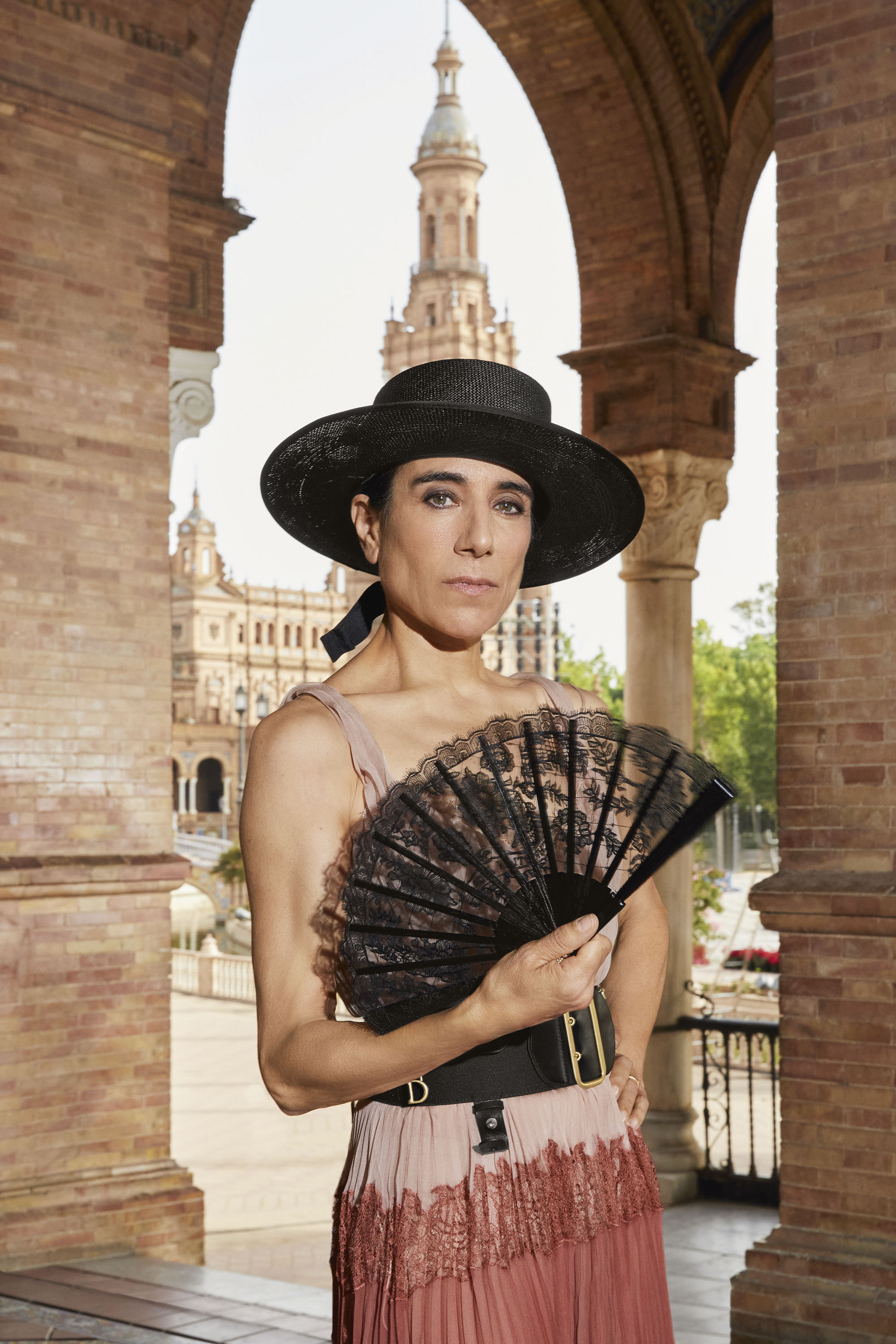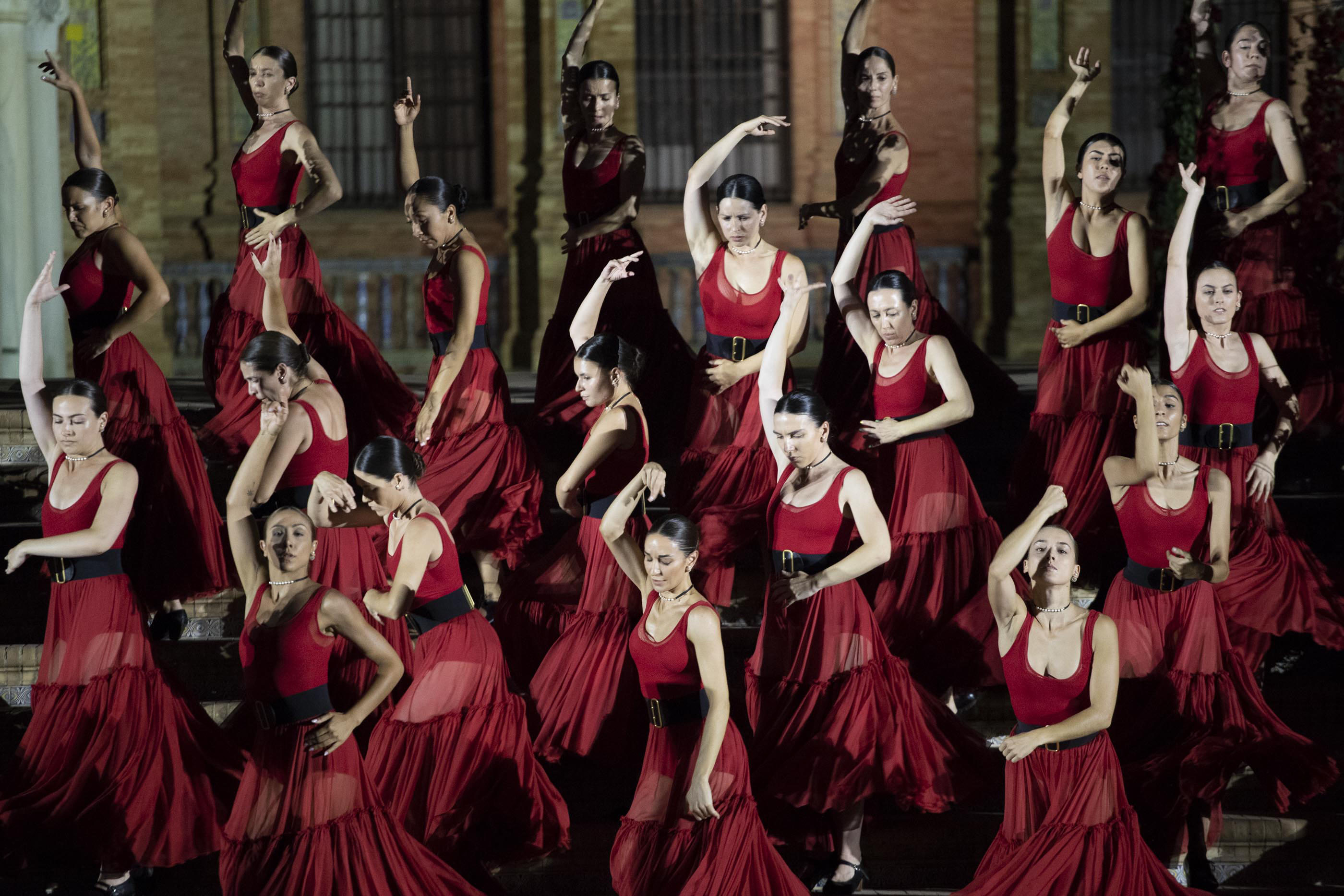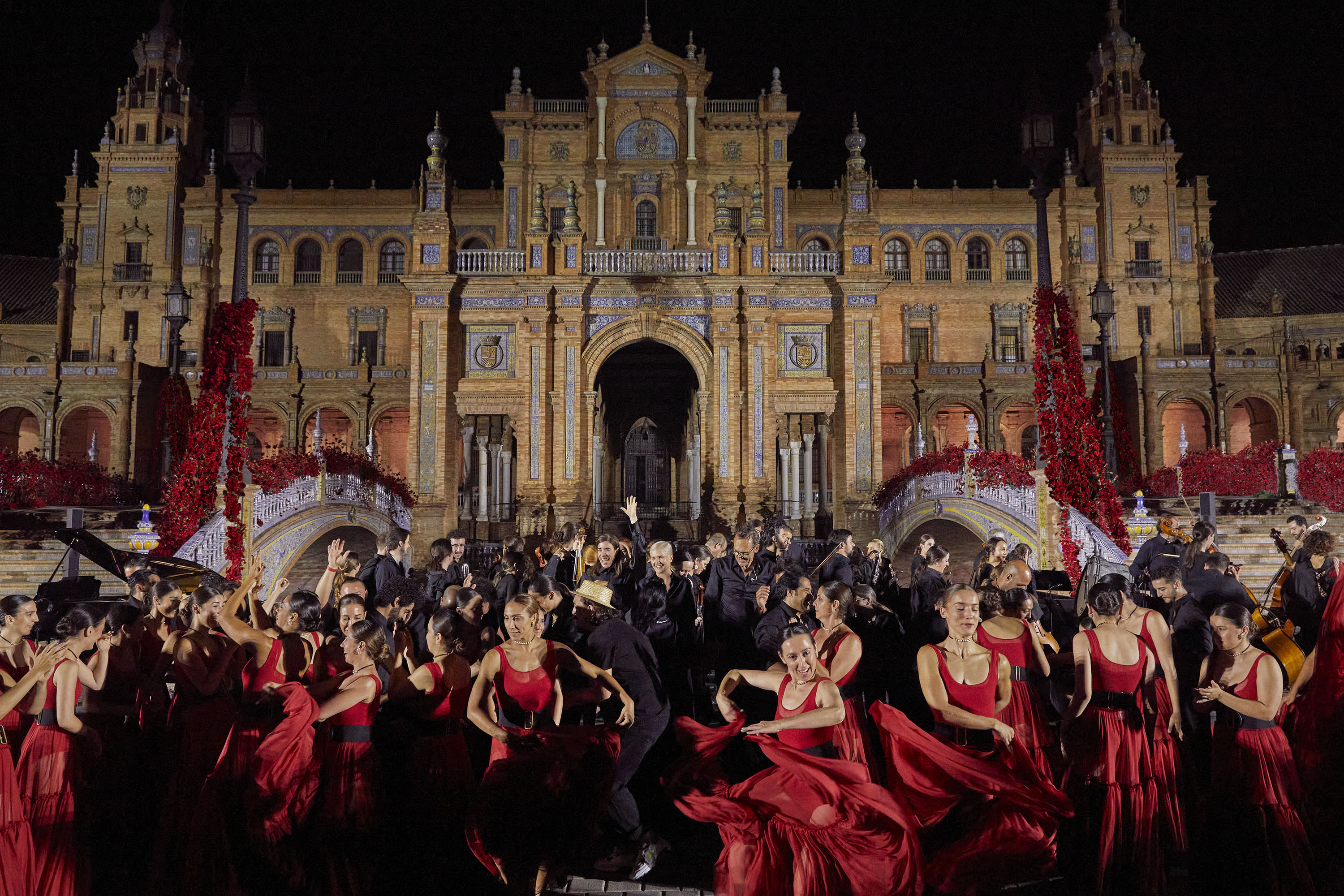ML: How did you conceive the choreography? BL: Maria Grazia Chiuri and I discussed her artistic intentions, the concept behind her collection and what she desired for the show; I visited the location with her and imagined a staging around the fashion show. Two soloists, two groups of dancers on either side, on the bridges. The rest is my language, which has always borrowed from flamenco and contemporary dance movements, which very naturally let me create a choreographic composition for the group and for the soloists. The music, played by the Seville Orchestra and conducted by Alberto Iglesias, carried the choreography, which took off very quickly, very powerfully, and soared very high. |
ML: Maria Grazia Chiuri says she admires Spanish women’s character: “They’re strong, while still wanting to be beautiful and independent.” Do you recognize yourself in that description? BL: Of course! I also recognize my mother, and the heritage of values that she passed down to me. She knew she was very beautiful and very seductive, but the strength she gave us is the courage to make things happen, to find the material means to give a future and freedom to her seven children, notably her daughters, by setting no limits at a time when that was not a given. That she trusted me to go to New York alone at seventeen, to build my career as a dancer and choreographer, shows how much she cared about her daughters’ independence! So, yes, I am proud to represent that freedom, that power, and to embody Spanish women’s reputation for beauty and independence through my work. |


